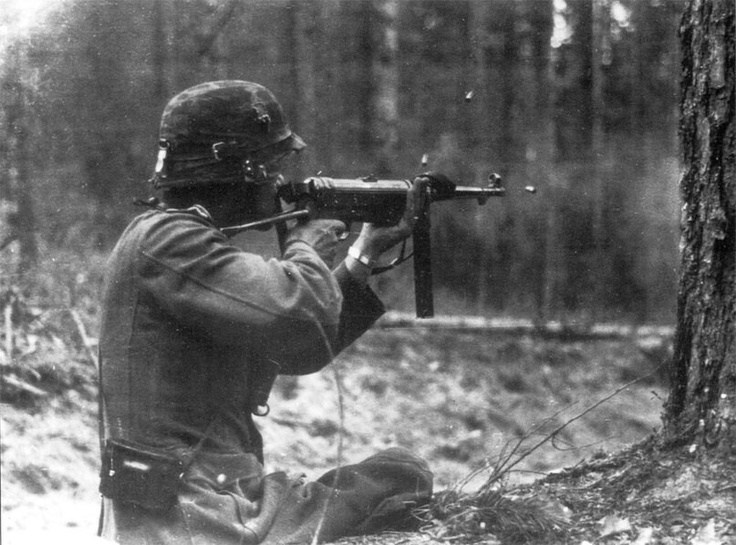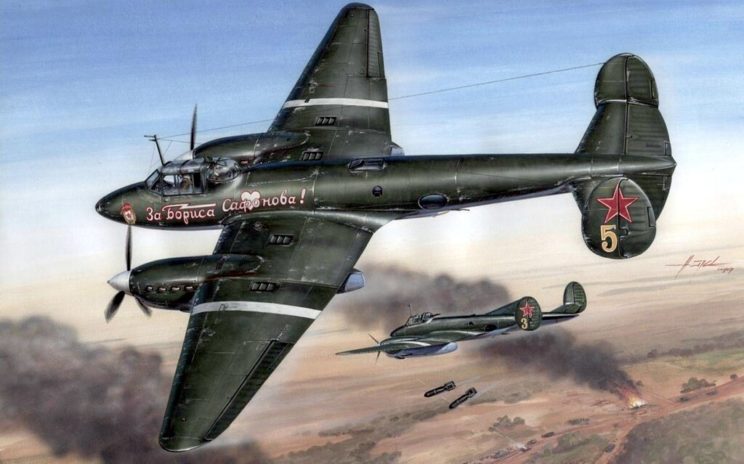Continuing my series of primers for Aelita’s War, this post includes material from the notes to the second novel, Raven’s Shadow. It covers German invasion of the Soviet Union and the subsequent actions, including the Battle of Stalingrad, that lead up to the events in the novel.
Operation Barbarossa
In the early hours of June 22, 1941, German forces crossed into Soviet territory, signalling the start of the largest invasion in history, codenamed Operation Barbarossa. The days that followed were disastrous for the Soviet Union. The invaders held numerous advantages, but many factors internal to the Soviet Union hindered its ability to resist. Years of terror from purges resulted in subordinates who wouldn’t make any independent decisions without confirmation from higher up. The Soviet armed forces were only partway through a massive program of modernization, with much of the equipment on the front lines hopelessly outdated. In the field, many Soviet leaders still adhered to old tactics, whereas the Germans had learned from two years of continuous warfare.
Two advantages the Soviets did have were space and manpower. They proceeded to utilize vast amounts of both in exchange for time. The Germans used mobile armoured formations to surround entire armies, capturing and killing hundreds of thousands in a matter of weeks. The Red Army threw thousands of raw recruits into slaughter, some even without weapons. As the Germans advanced, they found the land inhospitable. Josef Stalin ruthlessly ordered a “scorched earth” policy, burning crops and destroying infrastructure, preventing their use by the enemy, but bringing untold misery to the civilian population.
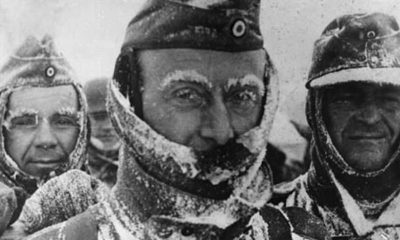
Despite these efforts, it seemed to much of the world that the collapse of the Soviet Union was imminent. Yet there were already signs that this invasion might not play out like the lightning warfare in the West. Much of the Soviet populace were weary of Stalin’s terror. But Adolph Hitler’s troops committed widespread atrocities, including systematic murder and enslavement, turning many who might have welcomed the Germans against them. The Germans’ rapid advance left thousands of Soviet soldiers unaccounted for behind their lines. These Soviet soldiers became partisans, guerrilla fighters who disrupted German supply lines, which were already overstretched across the vast lands of the Soviet Union. Whole Soviet industries moved eastward, saving them from capture and preserving the ability to rebuild the Soviet arsenal.
In the north, Finland joined the Germans to besiege Leningrad. In the south, the invaders captured Kiev and the agricultural fields of Ukraine. The big prize remained Moscow. Hitler’s muddled command caused critical delays in the attack on the Soviet capital. Then autumn rains brought on the muddy season, called rasputitsa. The German advance ground to a halt in a sea of muck and mire.
The onset of cold weather in November froze the ground and allowed the attack to start again. During this time, Stalin remained in Moscow, held a military parade, and made a speech that galvanized resistance. Soviet intelligence confirmed Japan wouldn’t join their German allies in this fight, so crucial reinforcements started arriving from Siberia. The Western Allies agreed to provide vital supplies.
The Germans came within 30 kilometres of Moscow. A determined Soviet counterattack and the bitter cold of winter threw them back in defeat. The lightning invasion had failed and both sides settled in for a long war.
The Battle of Stalingrad
The winter that followed was one of the coldest on record. Many German soldiers lacked winter clothing and suffered terribly. But the Soviets, themselves exhausted from resisting the initial invasion, couldn’t push the enemy back. As summer weather came, the Germans saw an opportunity to renew the mobile warfare that had given them so much success earlier in the war.
Instead of Moscow, Hitler changed his objective to Soviet oil fields in the south, and to the city of Stalingrad (now Volgograd.) A vital shipment point on the Volga River, Stalingrad had the added allure for Hitler of being named after his arch-enemy, Stalin.
Using mobility and close coordination with air power, the Germans advanced rapidly once again, scoring a series of devastating victories. The late summer of 1942 marked the furthest reach of the German invasion in the Soviet Union as they approached at Stalingrad.
From August through November, thousands of German soldiers hurled themselves against the city’s defences. They pushed the Red Army to within metres of the Volga River at some points. Yet the city held. Then on November 19, 1942, the Soviets launched a devastating counterattack. They trapped an entire German Army, 300,000 troops, in and around the city. Cut off from supplies and suffering from the harshness of Russian winter, the Germans struggled on until surrendering on February 2, 1943. At that time, only 90,000 Germans remained to be taken prisoner.
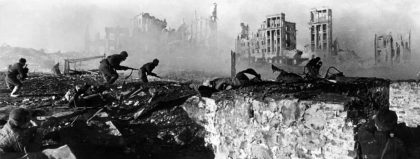
The Soviet counterattack continued through the winter, driving west to the city of Kharkov. It was briefly liberated, but the Red Army had overextended itself and was soon pushed back in defeat. Spring rains then brought a halt and allowed both sides to lick their wounds. The front lines stabilized, leaving a glaring point of contention on the map: a 250 kilometre wide bulge centring on the city of Kursk. The stage was set for one of the largest battles of the war, and a last desperate stab at victory by the invaders.
Further Reading
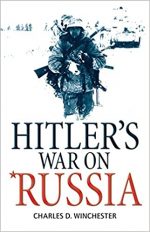 Hitler’s War on Russia, by Charles D. Winchester – Still not well understood by the majority in the West, the war between Nazi Germany and the Soviet Union had a titanic impact, not only on the course of World War II, but also on the post-war world order. This book gives a good, easy to follow overview of the major events in the conflict.
Hitler’s War on Russia, by Charles D. Winchester – Still not well understood by the majority in the West, the war between Nazi Germany and the Soviet Union had a titanic impact, not only on the course of World War II, but also on the post-war world order. This book gives a good, easy to follow overview of the major events in the conflict.
